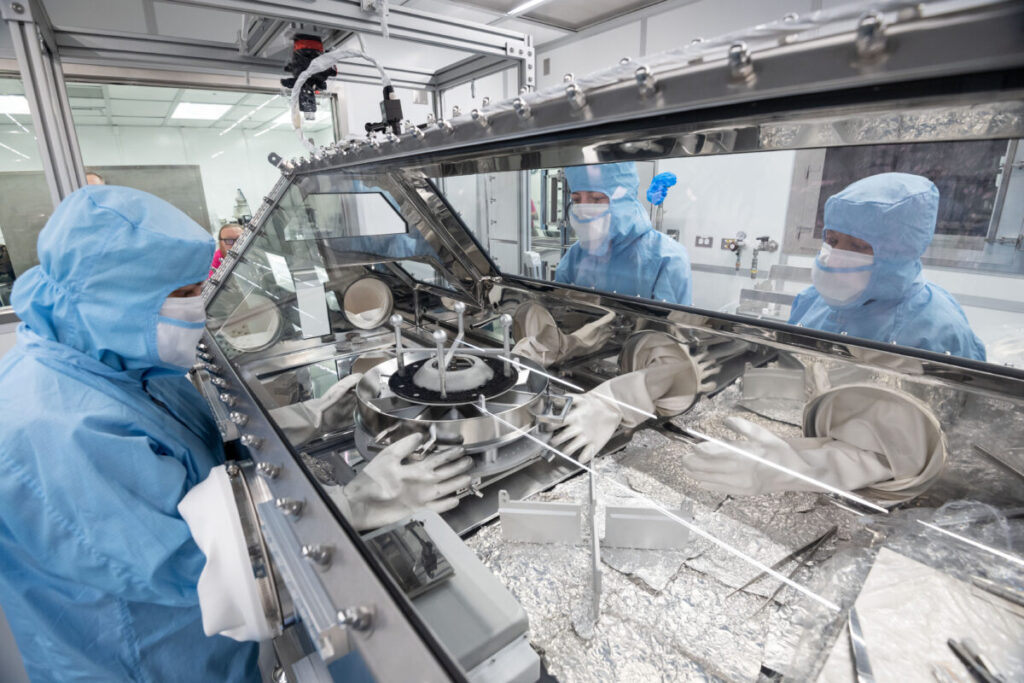NASA’s OSIRIS-REx mission has made history by delivering a remarkable 4.29 ounces (121.6 grams) of material from asteroid Bennu back to Earth, marking the largest asteroid sample collection ever achieved. The sample, which arrived on Earth on September 24, 2023, exceeded the mission’s initial goal of at least 60 grams, showcasing the mission’s extraordinary success.
The mission’s journey began with the launch in 2016, venturing over 200 million miles to reach the “potentially hazardous” asteroid Bennu. The sample collection, executed with precision, utilized a burst of nitrogen to secure the rocky space rubble, ensuring the spacecraft’s safe interaction with Bennu’s surface. This technique allowed OSIRIS-REx to gather nearly more than double the anticipated sample mass, encapsulating about 4.3 ounces (122 grams) of asteroid material.
This bulk sample from Bennu, containing rocks and dust aged approximately 4.5 billion years, offers an unprecedented window into the early solar system’s dynamics and the raw materials that contributed to the formation of planets and possibly the origin of life on Earth. Scientists at NASA’s Johnson Space Center in Houston faced challenges in disassembling the capsule due to stuck fasteners but eventually succeeded, revealing the precious cargo within.
The significance of this sample extends beyond its substantial mass. It represents a collection of primordial elements, potentially including biological precursors that could shed light on the earliest conditions necessary for life. This aligns with discoveries from Japan’s Hayabusa2 mission, which found organic compounds on asteroid Ryugu, further hinting at asteroids’ roles in delivering life’s building blocks to Earth.
As NASA prepares to distribute the Bennu material to researchers worldwide, the scientific community anticipates breakthroughs in understanding the solar system’s formation, the nature of organic compounds in space, and the processes that may have sparked life on our planet. This spring, a catalog of the OSIRIS-REx samples will be released, making these ancient regolith samples available for global scientific inquiry.






